- Nov 3, 2021
A Complete Guide to Crappie Fishing Under Bridges
Bridges produce consistently good crappie action, if you know how to fish them. Learn the approaches of several top anglers.
We drive over them in our cars. We ride under them in our boats, often on the way from one fishing hole to another. Many anglers hardly give them a second thought. But when it comes to crappie fishing, maybe bridges should be an angler’s first thought.
Fishing around bridges takes a lot of the guesswork out of finding crappie, says Oklahoma fishing guide Mike Taylor. Many of his favorite waters, including Lake Eufaula, are home to multiple bridges. He rarely drops a crappie jig in the water anywhere else before pulling up to a bridge area and looking with his electronics. He’s looking for baitfish and crappie.
“There’s just nothing more predictable than finding crappie around the bridges, especially the pylons,” Taylor said. “But even if you don’t see fish around the pylons or you fish a few minutes without getting a bite, don’t leave. They are around there somewhere.”
Two important factors
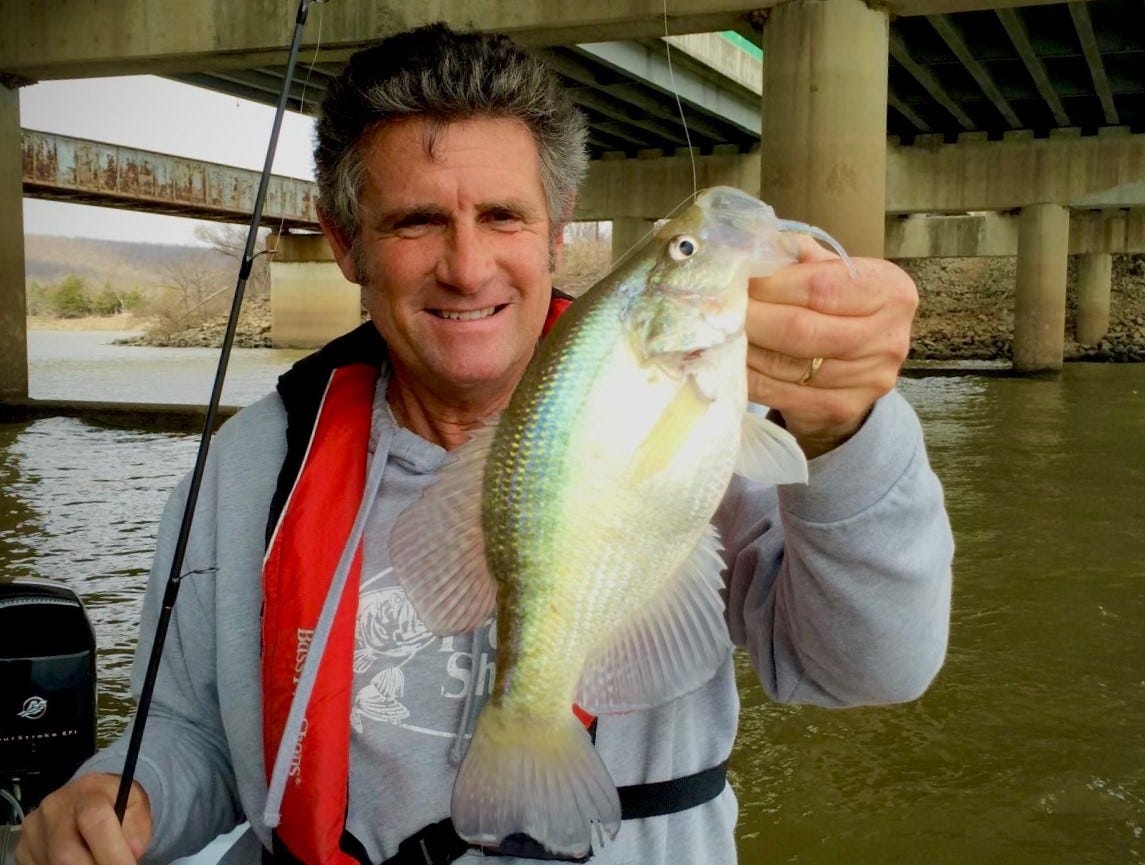

The first and most natural spot to find crappie on a bridge is right up on the pylon because that’s where algae grow, and the baitfish like to feed. However, baitfish often pull off nearby and form bait balls, and the crappie will move there with them. Either way, there is another thing that holds crappie on or near bridges.
“There’s always a little bit of current,” Taylor said. “Make note of that and know that the crappie will be facing into the current, whether it’s caused by water flowing because it’s high or whether it’s just the wind pushing water under the bridge. Toss your bait up past them and fish it back toward them. They are sitting there waiting for a meal, and you can give it to them.”
Taylor has every color and style Bobby Garland crappie tail that has ever been made, but his favorite for bridges is the 2-inch Baby Shad in Monkey Milk. It’s the No. 1 selling crappie bait in America, and there’s a reason for it, he noted. He also will switch to Lights Out when it is cloudy or water is stained.
Taylor said there are times of the year, especially near the spawn, where crappie will migrate down the river channel and onto the edge of nearby flats. That’s a popular time to fish in the areas near bridges when the fish aren’t necessarily right up on the bridge itself.
Bridge Variety
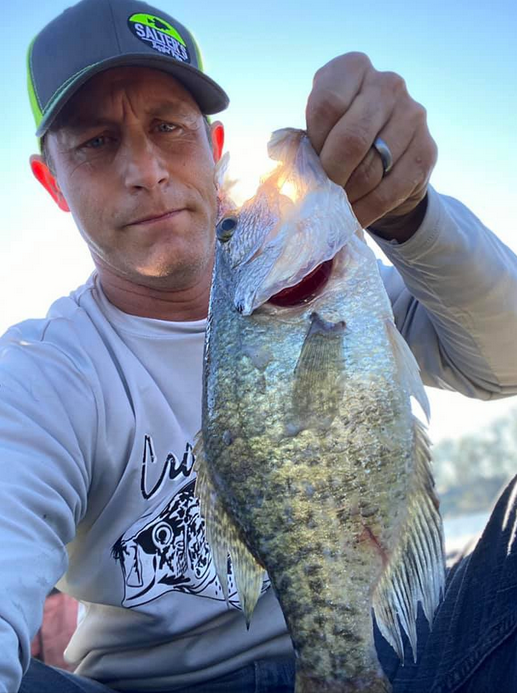

Bridges can be 20 feet long and in 3 feet off the water, or they can be 30 feet high and span several miles. Crappie love water under bridges of all sizes. Blaine Salter knows bridges and crappie, whether you’re talking about the massive 18-mile-long Interstate 10 bridge that spans the Atchafalaya basin or small country road/canal bridges that are so low you can’t get a boat under them.
Salter, the owner of Salter Jig Poles, said he never passes up a bridge. They provide a steady home for baitfish, protection for the fish and moving water that seems to trigger bites, and many fish never leave them.
“People don’t realize it, but that huge bridge that crosses the Atchafalaya Swamp between Lafayette and Baton Rouge is one of the best crappie holes in America,” Salter says of his home water. “We fish the pilings, and the ones that are closer to deeper water are the best. The stuff that grows on the pilings feeds the baitfish, and the baitfish feed the crappie. It’s a great place to hide from garfish and other predators.”
Some of the best bridges in swampy or marshy areas are also very low. Salter said that to take advantage of them, you need to learn to pitch your jig up under the bridge and work it out slowly with the current, much like shooting a dock.
Big Fan of Bridges
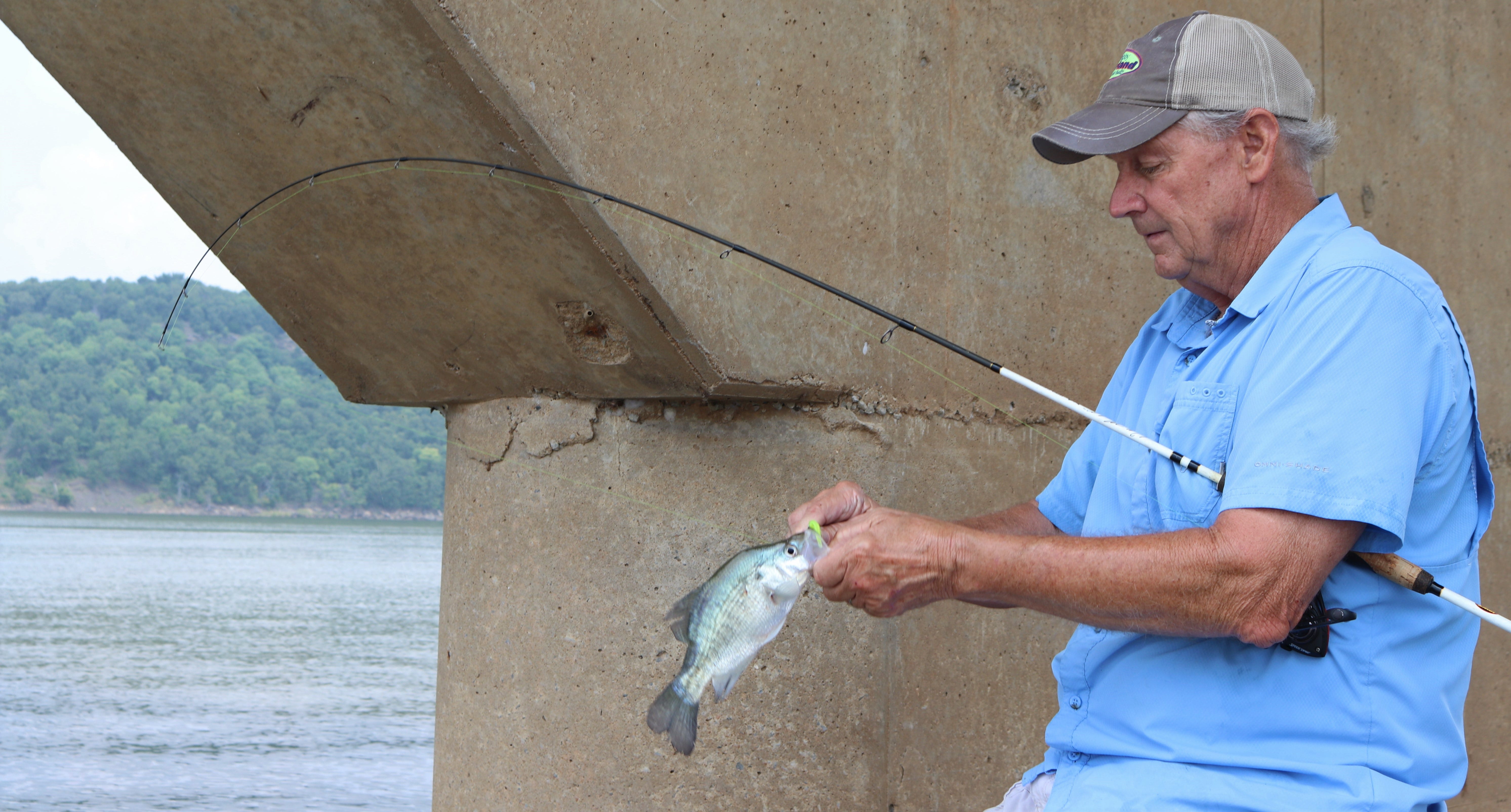

“I’m a big fan of bridges,” said Gary Dollahon, crappie fisherman and long-time marketing guru for Bobby Garland baits. “Just because of how they are situated and form a natural constriction of water flow, they are a fish magnet for crappie. You always have a little bit of current, either from water flow or from the wind moving the water from side the side. The baitfish congregate there, and the pillars are the perfect vertical structure for crappie. They can go shallow or deep and never have to leave.”
Dollahon, who fishes bridges for crappie throughout the year, noted that you don’t even need electronics to fish bridges. Just fish as tight to the pillars as you can. He likes to start fishing shallow and work his way deeper until he finds the depth the bait and crappie are holding. While the fish may hit the bait while it is moving, he prefers dead sticking approach. The baitfish are usually just holding tight to the columns and not swimming around. Your bait should do the same.
“Either end of the bridge is also a good spot, where riprap is coming out and dropping off into the channel,” he said. “Study that and check out the wind, current and water flow. The fish will be facing into the moving water, and they will also hold in the eddies behind the bridge columns or on the edge of the rocks. If you figure out where the eddy side is, it can be a load-up spot for you.”
He reminds anglers to make sure they follow regulations related to bridges. Most bridges are no-wake zones, which is good for fishermen. Some states do not allow fishing under bridges, but you can fish the edges of the bridges.
Dollahon has also a special kind of bridge he loves to fish — railroad bridges. While many anglers might think a loud, vibrating train passing overhead would scare away fish, he said the opposite is true. He has found that for some reason, whether it be the vibration shaking the plankton off or it just making the baitfish get active, a passing train makes the fish bite.
“When you hear a train coming, get on high alert and get to a good spot under the bridge,” he said. “It obviously stirs things up and the fish get active when it’s first coming, while it’s passing and for a little bit after it’s gone.”
24/7 Crappie Catching
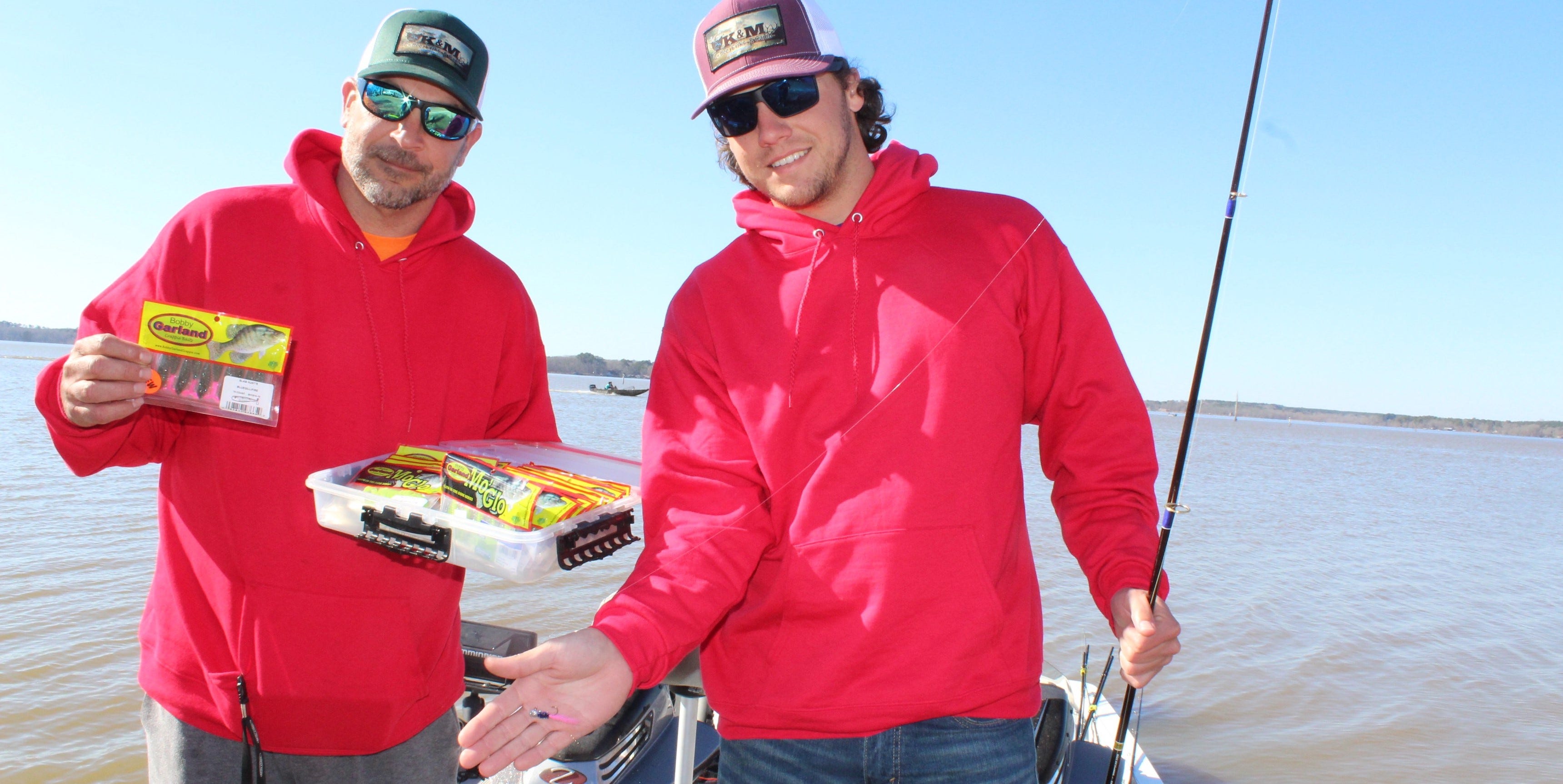

Tim Hebert is a touring crappie tournament pro who fishes all kinds of waters and sees all kinds of bridges. He’s a bridge believer, too.
“One of the biggest bridges we fish is on Toledo Bend,” he said. “Not only is the lake huge, but the big Pendleton Bridge that crosses the mid-lake area is about four miles long and has hundreds of pillars. They go from shallow to deep and there are always fish on them. Over the years, people have added all kinds of brush tops and other structure, too, and that just makes it all the better.”
Most of the time, the lake’s bridge has lights under it in some sections, which makes night fishing great, too, he says. Even if the lights aren’t working, you can pull up and put out your own lights and gather crappie from all around. It’s a 24/7 operation on the bridges here.
His favorite lure on Pendleton Bridge is the Blue Ice or Monkey Milk Baby Shad. He also likes to use other colors if the bite is slow, and said to match the bait to the water color and conditions. Light baits for clear days. Dark baits for cloudy or stained water.
Quick tips for steady catches
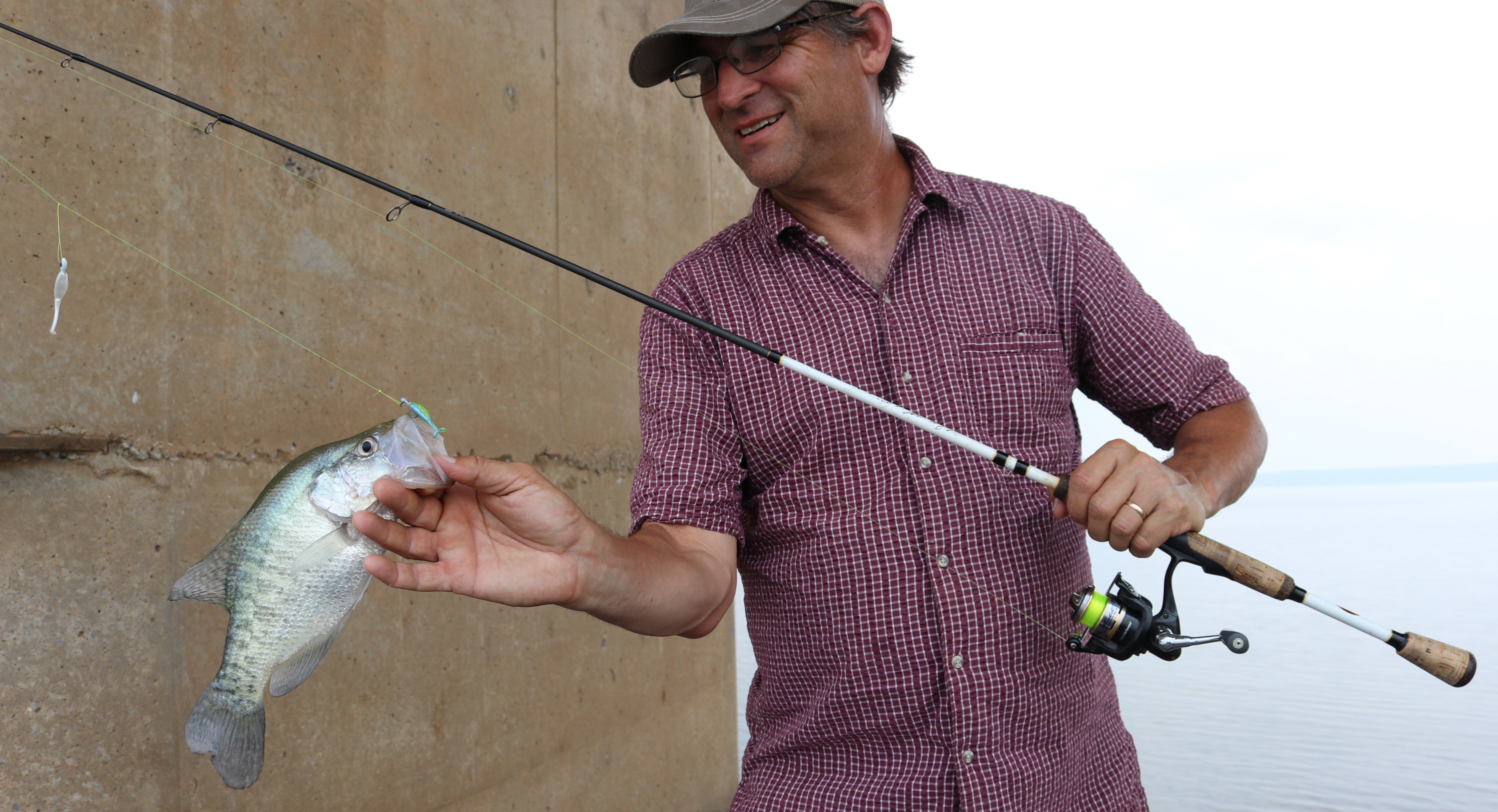

- Present your bait so it approaches fish from the direction they are facing, which is typically into any current.
- Fishing in an eddy or right up beside the pylon of a bridge, hold your jig steady because the natural movement or the water will give it just enough action.
- Start fishing shallow and work your way down until you find the fish. When you find the fish at one depth by one bridge, they’ll typically be at that same depth on every bridge.
- There may not be crappie by every pier of a bridge, but they will be there somewhere. Keep mental notes of which ones you get bites by.
- Big bridge or small, the same general rules apply. Crappie love them, and by fishing them correctly, you’ll catch fish.
- If you are fishing a railroad bridge, hope for a long train!



